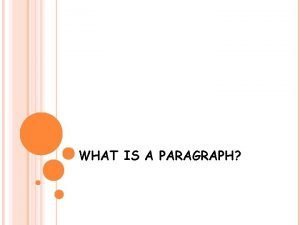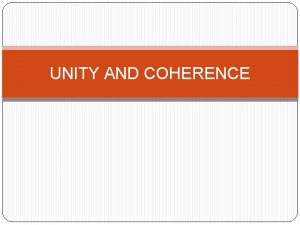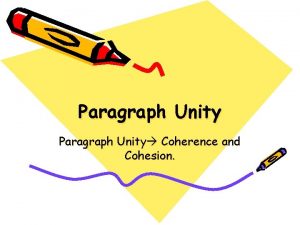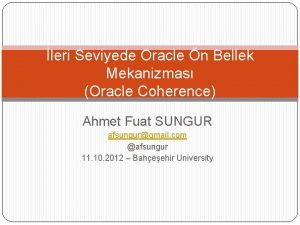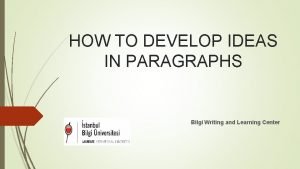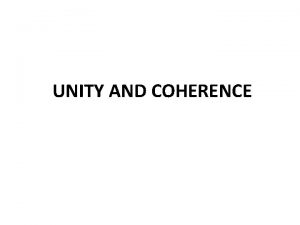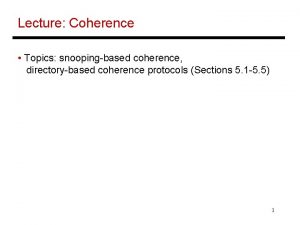Unity Variety Composition Unity refers to the coherence










- Slides: 10

Unity, Variety, & Composition

• Unity refers to the coherence of the whole, the sense that all of the parts are working together to achieve a common result. In other words, a harmony of all the parts. • Conceptual unity is when there is a connection of the different elements of an image through meaning or reference. (four, 4, and IV are all different ways to convey the concept of the number 4. ) • Visual Unity is when all the different elements of a design are similar in style or treatment. (seven, %, cat, and barn are all unified by typeface style)

• A grid can organize various components of a visual image into a cohesive pattern or group. Alignment is the term used in graphic design for this concept. • Continuity is the planned arrangement of various forms so the edges are lined up and there is a visual relationship between 2 or more elements. • Repetition is a valuable and widely used grouping device for achieving visual unity. • Proximity is concerned with where items are placed in relation to each other. Putting elements close together is an easy way to gain unity.


Gestalt Theory • Gestalt Theory is concerned with the relationship between the parts and the whole of a composition. Gestalt Theory holds that the whole is more than the sum of its parts. The visual world is so complex that the mind has strategies for coping with the confusion. It tries to find the simplest solution to the problem. • One of the ways it does this is to group items that have certain characteristics in common. The stronger the grouping, the stronger the gestalt. It is this grouping that contributes to the unity in a design.

• Variety is a Principle of Design that refers to a way of combining the Elements of Art to achieve intricate and complex relationships. • Variety is what adds interest to a design. The trick is to strike a good balance between unity and variety. Too much unity and the design could result in monotony, too much variety could result in chaos.


Conceptually and Visually United Design Assignment: • Choose a subject matter—broad categories like birds, flowers, shoes, etc. —the subject matter is already focusing the design in a conceptual way. Now look at depicting the subject matter in two different compositions, each focusing on a different Element of Art. This does not mean that you will not be able to use the other Elements in your design, just that your approach will emphasize one. The purpose is to create visual unity with one of the Elements being stronger than the others in the design and still pull the design together. Make sure that there is enough variety in your design to make it interesting. • Start with some thumbnail sketches to get your ideas rolling. Then work on some compositional studies to refine your 2 different compositions each focusing on a different Element. • You will have 2 final designs each the size of approx. half a sketchbook page.


Homework: • Finish your in-class Designs on Unity/Variety. • Reading Assignment: Chapter 9

